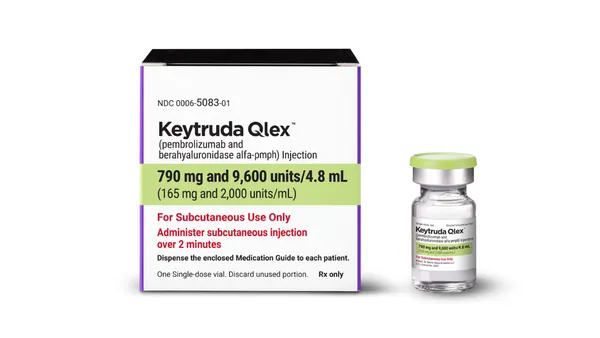Account Planning Challenge: Incorporating a Brand’s Mechanism of Action Into the Communication Strategy Branding Palio Communications Mark McCoy,R.Ph. Senior VP/Senior Brand Planner When developing a strategy for a new brand, anything about the brand that is unique is a potential source of differentiation. It is essential that the brand is perceived as distinctive and unique. As the marketing saying goes, “be distinct or be extinct.” Account planning tools and analysis can help marketers understand how to fully exploit their brand’s unique MOA. MOA Can Be the “Reason to Believe” A novel MOA can be a convincing reason for customers to believe that a brand’s unique benefit is true. Customers could accept the idea that Mevacor, the first statin, would lower cholesterol more effectively because it worked in a completely different way than existing lipid-lowering agents. Negram could kill bacteria that were resistant to existing antibiotics because it was the first quinolone and had a new strategy for killing bacteria. Prozac, the first selective serotonin reuptake inhibitor in the United States, was superior to tricyclic antidepressants (TCAs) because it mainly worked by increasing levels of serotonin, rather than norepinephrine. In many cases, marketers use their brand’s clinical study results as the basis for belief in the brand’s unique benefit, whereas the underlying reason why the brand performed so well in the clinic may actually be because it works in a whole new way. The new mode of action gives physicians permission to believe that the better performance is genuine and that it will be experienced by their patients when they prescribe the brand. MOA Can Be The Brand’s Category Sometimes it makes sense to use the MOA to define the brand’s category. For example, if it’s a challenge to link the MOA as the reason to believe the unique benefit is made possible, brand category may be the option to explore. Any worthwhile positioning statement template includes something along the lines of “category,” “market description,” “frame of reference,” or even “what business are you in?” All of these refer to the idea of the category in which the brand competes and helps to define the competition. The “category” could be the ideal place to capture a brand’s unique MOA and make it an integral part of the brand’s positioning. In an effort to be customer-focused, some marketers insist on describing the brand’s category “the way our customers describe it.” But customers will naturally try to describe the brand in terms that are familiar to them. If marketers allow their customers to tell them how to describe their new brand, chances are that description will sound very similar to how they would describe the competition. Certainly, being customer-focused is a virtue, but don’t hesitate to lead customers when the situation calls for it. MOA Is Not a Benefit Recognize the MOA for what it is — an attribute of the brand. It may even be an essential attribute, but the MOA itself is not a benefit, and don’t make the mistake of presenting it as such. Present the MOA as a reason to believe, a proof point. The difference between presenting the MOA as an attribute instead of a benefit may seem subtle, but it will make a tremendous difference in how customers will react to it. Keep It Simple A brand’s unique MOA provides an opportunity to present the brand in words that are new, fresh, and interesting. Initially, some physicians may be skeptical or even reject the new terminology as unfamiliar or unproven. When marketers hear these types of objections from customers, they listen to them and ask themselves why physicians are reacting this way. Is the MOA story too complex? If so, work on simplifying it. Take Albert Einstein’s advice: “Everything should be made as simple as possible, but not simpler.” Is the MOA description accurate? If it is accurate and physicians are still skeptical, the strategy may be right, but there is a need to educate customers to give them the knowledge needed to grasp and accept the brand’s unique MOA story. Build an Emotional Appeal Based on a Unique MOA Suppose that the unique MOA is the point of differentiation for the brand. The next step is to determine how to build a compelling and differentiating brand essence and brand personality with its underpinnings rooted in the unique MOA. Navigating the Sea of Sameness Marketers sometimes describe the category in which they compete as a sea of sameness, where similar companies use similar claims to sell similar products to similar customers. It is far too easy to get lost in this environment. When the brand possesses a unique characteristic, such as a novel MOA, make the most of it. Be sure to present the brand’s MOA for what it is: a category designation or a reason to believe. Creating an Emotional Appeal and a Brand Personality Unique Aspect Potential Emotional Possible Brand of Brand’s MOA Appeal Personality Targets a previously Motivation: Power; Prompt: Enhance Strong untapped disease pathway ability to prevail over the disease More selective than other agents Motivation: Social Standing; Discerning Prompt: A more sophisticated way to treat the condition Treats cause of disease instead Motivation: Curiosity; Prompt: of relieving symptoms Achieve greater level of success Ambitious Making the Most of a Unique MOA Do Don’t Present MOA as a reason to believe Present the MOA as a benefit Consider presenting the MOA as Describe the MOA in overly the brand’s category familiar, ordinary terms Keep the MOA description concise Consider building on the MOA to create and straight-forward a unique brand vision and personality Palio Communications, Saratoga Springs, N.Y., an inVentiv Health company, is a full-service healthcare advertising and communications agency. For more information, visit palio.com. March 2007 VIEW on Advertising
An article from


Account Planning Challenge: Incorporating a Brand's Mechanism of Action Into the Communication Strategy
Filed Under:
Commercialization








